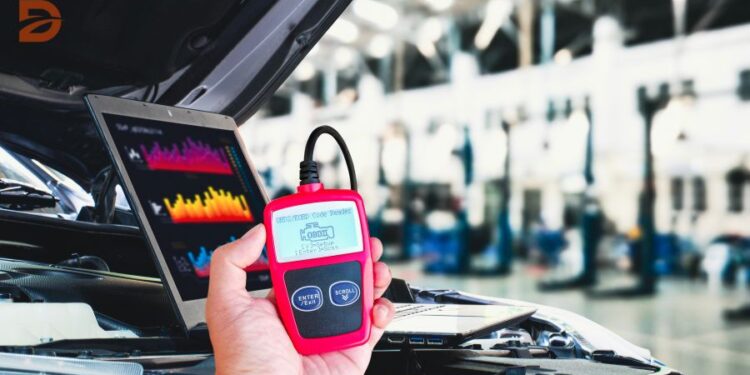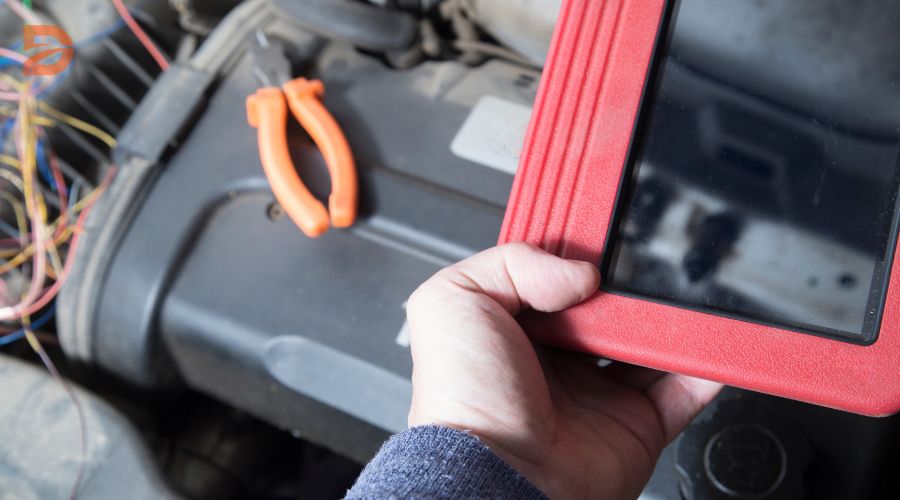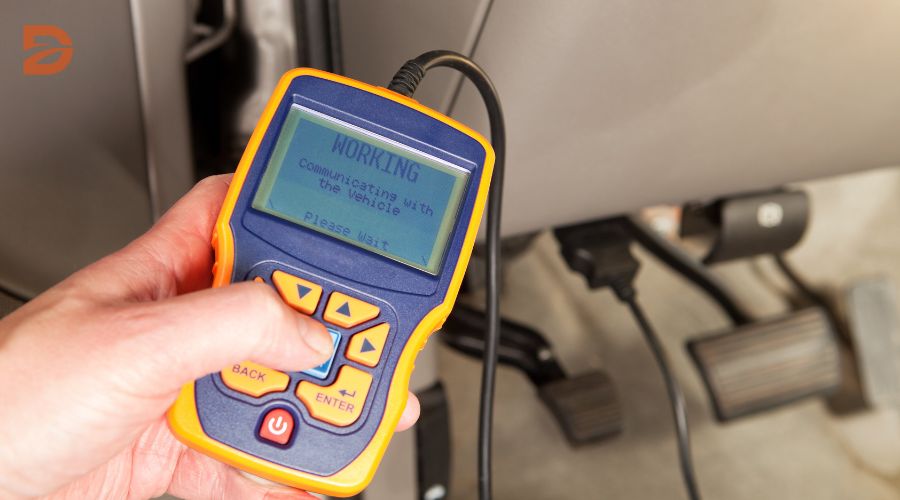Did you know that OBD-II scanners are now more affordable than ever, empowering drivers to diagnose their vehicle’s issues before visiting a mechanic? These versatile tools have become essential for car owners, providing a range of features that can save time, money, and headaches when it comes to maintaining and repairing their vehicles.
The best OBD-II scanners on the market today offer a wealth of capabilities, from reading and clearing engine fault codes to predicting potential problems and even providing step-by-step repair instructions. Whether you’re dealing with a check engine light, emissions concerns, or simply want to stay on top of your car’s health, these scanners can be a game-changer in your automotive maintenance arsenal.
Key Takeaways
- OBD-II scanners are no longer solely for mechanics but are now accessible and affordable for everyday drivers.
- These tools can diagnose a wide range of car problems, from engine issues to emissions concerns, saving you time and money on visits to the mechanic.
- The best OBD-II scanners offer advanced features like wireless connectivity, live data monitoring, and even predictive maintenance capabilities.
- With prices ranging from around $50 for basic models to over $500 for high-end scanners, there’s an option to suit every budget and need.
- Understanding the capabilities and features of OBD-II scanners can empower you to take a more proactive approach to maintaining your vehicle’s health.
Understanding OBD-II Scanners
OBD-II, or On-Board Diagnostics II, is a standardized vehicle diagnostics system that has become an essential tool for automotive enthusiasts and mechanics alike. These scanners are designed to interface with a car’s onboard computer, providing valuable insights into the vehicle’s performance and health.
What is an OBD-II Scanner?
An OBD-II scanner is a device that connects to a vehicle’s OBD-II port, typically located under the dashboard. These scanners can read and interpret diagnostic trouble codes (DTCs), which are the starting point for diagnosing most modern automotive malfunctions. They can also provide access to live data streams, enabling users to monitor various sensors and system performances in real-time.
Importance of OBD-II Scanners for Car Diagnosis
OBD-II scanners are essential for car diagnosis and maintenance. They allow drivers to troubleshoot check engine lights, interpret error codes, and determine the severity of car issues before taking it to a mechanic. This can save time and money by identifying problems that can be fixed at home and avoiding unnecessary trips to the repair shop. Moreover, the standardized nature of OBD-II systems ensures compatibility across a wide range of vehicles, making these scanners a valuable investment for any car owner.
| Key Features of OBD-II Scanners | Benefits for Car Owners |
|---|---|
|
|
OBD-II Scanners, Car Diagnostics: Choosing the Right One
When it comes to diagnosing car problems, OBD-II scanners have become an essential tool for both DIY mechanics and professional auto repair shops. These scanners come in a variety of types, each with its own set of features and capabilities. Understanding the different types of OBD-II scanners and the key features to look for can help you make an informed decision when choosing the right one for your needs.
Types of OBD-II Scanners
OBD-II scanners can be broadly categorized into three main types:
- Basic code readers – These are the most affordable and straightforward OBD-II scanners, designed for quickly checking and clearing diagnostic trouble codes.
- DIY scanners – Offering more advanced features, DIY scanners are suitable for the home mechanic, providing access to live data streams and more in-depth diagnostics.
- Professional scanners – Designed for auto repair shops, professional scanners are the most comprehensive diagnostic tools, offering manufacturer-specific codes, data logging, and bidirectional controls.
Key Features to Look For
When choosing an OBD-II scanner, several key features should be considered:
- Compatibility – Ensure the scanner is compatible with your vehicle’s specific make, model, and year. Universal scanners are designed to work with a wide range of vehicles, while manufacturer-specific scanners offer deeper integration and access to brand-specific codes and features.
- Functionality – Determine the level of diagnostics you require, such as code reading, live data access, and advanced troubleshooting capabilities.
- Display and user interface – Consider the scanner’s display and how intuitive the user interface is, as this can impact the ease of use during the diagnostic process.
- Software updates – Look for scanners that offer regular software updates, ensuring they can diagnose the latest vehicle models and maintain their effectiveness over time.
By understanding the different types of OBD-II scanners and the key features to look for, you can make an informed decision and choose the right tool to diagnose and address your car’s problems efficiently.
Top Picks: Best OBD-II Scanners for 2023
When it comes to diagnosing and troubleshooting your vehicle, the right OBD-II scanner can make all the difference. From advanced features to affordability, there are several top-notch options on the market. Let’s explore some of the best OBD-II scanners for 2023 that cater to different needs and budgets.
Best Overall: Innova 6100P
The Innova 6100P is our pick for the best overall OBD-II scanner. This versatile handheld device seamlessly integrates with the Innova app, allowing users to diagnose issues, access repair information, and even receive parts recommendations directly on their mobile devices. With its ability to read and clear fault codes, perform I/M readiness tests, and predict potential problems, the 6100P is a powerful tool for both amateur and professional mechanics.
Best Mobile Scanner: Topdon TopScan
For those who prefer a more mobile-friendly solution, the Topdon TopScan stands out as the best OBD-II scanner. Its compact, wireless design enables users to connect it to their smartphones via Bluetooth and perform diagnostic tasks without being tethered to the vehicle. In addition to the standard code reading and clearing functions, the TopScan can also check performance and efficiency, making it a great choice for those who want a discreet yet feature-rich scanner.
Best Budget Option: Launch CR529
If you’re on a tight budget, the Launch CR529 is the best OBD-II scanner for you. Priced under $40, this scanner still offers an impressive array of features, including live data, an instant inspection function, and lifetime software updates. While it may lack some of the more advanced capabilities of higher-end scanners, the CR529 provides excellent value for money and can handle the basic diagnostic needs of most drivers.
OBD-II Scanners for Specific Needs
When it comes to troubleshooting and diagnosing older vehicles, the Bosch OBD 1300 stands out as the best OBD-II scanner. Unlike many scanners that only support cars manufactured after 1996, the Bosch OBD 1300 is compatible with a wide range of pre-1996 vehicles, including models from Chrysler, Ford, GM, and Toyota. This makes it an invaluable tool for owners of classic cars who need to quickly identify and address issues.
For mechanics and DIY enthusiasts who require a rugged and durable OBD-II scanner, the Topdon Phoenix Lite 2 is the top choice. Featuring a sturdy, horizontal design, this scanner is built to withstand the rigors of the workshop. But it’s not just about durability; the Phoenix Lite 2 is also packed with advanced diagnostic features, making it a powerful tool for troubleshooting complex automotive problems.
| Scanner | Best For | Key Features |
|---|---|---|
| Bosch OBD 1300 | Older Cars |
|
| Topdon Phoenix Lite 2 | Rugged Use |
|
Conclusion
As the automotive industry continues to evolve, OBD-II scanners have become essential tools for car owners and mechanics alike. These powerful diagnostic devices have revolutionized the way we maintain and repair our vehicles, putting professional-level car diagnostics within reach of the average consumer.
Whether you’re a seasoned mechanic or a car enthusiast looking to take a more active role in maintaining your vehicle, investing in the right OBD-II scanner can make a significant difference in your automotive maintenance and repair experience. By allowing you to diagnose issues, interpret fault codes, and even predict potential problems, these affordable devices can help you save time, money, and the hassle of costly trips to the mechanic.
As the technology behind OBD-II scanners continues to evolve, with advancements like the WWH-OBD protocol expanding the diagnostic information available, it’s clear that these tools will only become more essential for maintaining the health and performance of your car. So, if you’re serious about taking control of your vehicle’s maintenance and repair, be sure to explore the wide range of OBD-II scanners on the market and find the one that best suits your needs.
FAQ
What is an OBD-II scanner?
An OBD-II scanner is a device that connects to a vehicle’s onboard computer system, allowing it to communicate and provide diagnostic information. These scanners can read and clear diagnostic trouble codes (DTCs), which are the starting point for diagnosing most modern automotive malfunctions.
Why are OBD-II scanners important for car diagnosis?
OBD-II scanners are essential tools for car diagnosis and maintenance. They allow drivers to troubleshoot check engine lights, interpret error codes, and determine the severity of car issues before taking it to a mechanic. This can save time and money by identifying problems that can be fixed at home and avoiding unnecessary trips to the repair shop.
What are the different types of OBD-II scanners?
OBD-II scanners can be categorized into three main types: basic code readers, DIY scanners, and professional scanners. Basic code readers are designed for simplicity and affordability, allowing users to quickly check and clear diagnostic trouble codes. DIY scanners offer more features, such as access to live data streams, for the home mechanic. Professional scanners are advanced diagnostic tools for auto repair shops, providing comprehensive capabilities like manufacturer-specific codes, data logging, and bidirectional controls.
What features should I consider when choosing an OBD-II scanner?
When choosing an OBD-II scanner, key features to consider include compatibility, functionality, display, user interface, and software updates. Compatibility is crucial, as universal scanners are designed to work with a wide range of vehicles, while manufacturer-specific scanners offer deeper integration and access to brand-specific codes and features. Functionality, such as code reading, live data, and advanced diagnostics, determines the scanner’s versatility. The display and user interface affects the ease of use, and regular software updates ensure the scanner remains relevant and capable of diagnosing the latest vehicle models.
What is the best overall OBD-II scanner?
The Innova 6100P is our top pick for the best overall OBD-II scanner. This device offers a unique blend of handheld and app-based capabilities, allowing users to diagnose issues and access repair information directly on the scanner or through the Innova app. The 6100P can read and clear fault codes, perform I/M readiness tests, and even predict potential problems and provide parts recommendations, making it a powerful tool for both amateur and professional mechanics.
What is the best mobile OBD-II scanner?
The Topdon TopScan is the best mobile OBD-II scanner. Its compact, wireless design allows users to easily connect it to their smartphone via Bluetooth and perform diagnostic tasks without being tethered to the vehicle. In addition to the standard code reading and clearing functions, the TopScan can also check performance and efficiency, providing estimates of horsepower and torque. This makes it a great choice for those who want a discreet yet feature-rich scanner.
What is the best budget OBD-II scanner?
For those on a budget, the Launch CR529 is the best OBD-II scanner option. Priced under, this scanner offers an impressive array of features, including live data, an instant inspection function, and lifetime software updates. While it may lack some of the more advanced capabilities of higher-end scanners, the CR529 provides excellent value for money and can handle the basic diagnostic needs of most drivers.
What is the best OBD-II scanner for older vehicles?
For owners of older vehicles, the Bosch OBD 1300 is the best OBD-II scanner. Unlike many scanners that are only compatible with cars manufactured after 1996, the Bosch OBD 1300 comes with cables that can connect to a range of pre-1996 vehicles, including models from Chrysler, Ford, GM, and Toyota. In addition to supporting older cars, the OBD 1300 also provides a database of repair suggestions to help get your classic car back on the road.
What is the best rugged OBD-II scanner?
The Topdon Phoenix Lite 2 is the best rugged OBD-II scanner for professionals and amateur mechanics who need a scanner that can handle a beating. With its sturdy, horizontal design, the Phoenix Lite 2 is built to withstand the rigors of the workshop. But it’s more than just a durable device – it’s also packed with advanced diagnostic features, making it a powerful tool for troubleshooting complex automotive issues.










